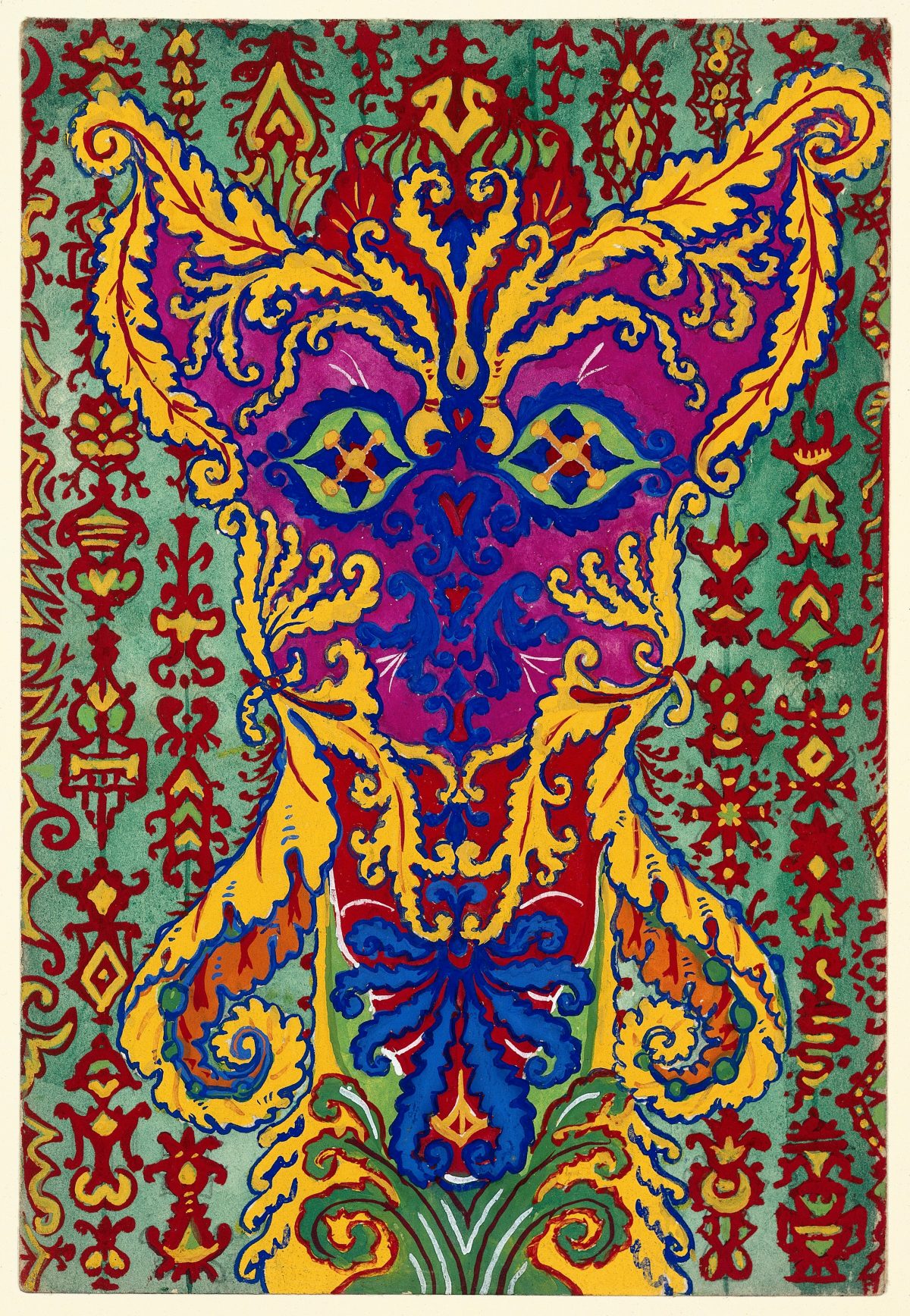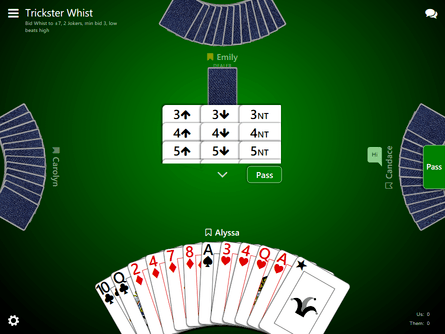- Whistlindiesel Shot
- Whisk Card Game
- Bid Whist Plus On Facebook
- Bid Whist Online With Real People
- Whistler
- Cached
Whist Online, Your Way. Let the fun and competition begin. Play the game s you love with friends and family or get matched with other live players at your level. Trickster Whist offers customizable rules so you can play Whist your way! Fast-paced, competitive. The classic game of whist is a plain-trick game without bidding for 4 players in fixed partnerships. There are four players in two fixed partnerships. Partners sit facing each other.
Whist Rules
Whist is a simple trick taking game, played in pairs. The players sitting across from each other are a team and together they try to get as many tricks as possible.
Dealing and starting
Each player gets dealt 13 cards. The first player to start is chosen randomly, in the next round the person to start will be the next person to the left of the person who started the current round. (1 round is 13 tricks, i.e. starting a new round is when all the cards are finished and are dealt again).
Trumps
In each round there is a special trump suit, whose cards are considered higher than all the other suits. Every fifth round there is no trump. The order of trumps goes: Hearts, Spades, Diamonds, Clubs, No Trump.
Playing
A player leading a trick can put out a card in any suit he wants, even the trump suit. The players that follow must put out cards in the same suit if they have at least one. If they have no cards in the same suit they may put out any card they want. The player who puts out the highest card in the suit takes the trick, unless someone has put out a trump card, in which case the highest trump card takes it. The player who takes the trick will then lead in the next trick.
Scoring
After a round is finished the score is calculated. The tricks of each team are counted, and they get a point for each trick over 6 tricks. So if Mike and Lisa get 8 tricks and You and Bill get 5, then Mike and Lisa get 2 points but You and Bill get no points. Points are tracked between rounds and the first team to get 7 points wins the entire game. Since there are 13 tricks in each round and you get points for number of tricks above 6 that means that if you get all 13 tricks you will be able to win in one round.

Whist is a classic English trick-takingcard game which was widely played in the 18th and 19th centuries.[1]
Whist is played by four players. They play in two partnerships with the partners sitting opposite each other. Players cut or draw cards to determine partners, with the two highest playing against the two lowest. The players then cut for deal. Unlike contract bridge, there is no bidding process. Trumps are decided by cutting a deck of cards. Therefore the game can be played by people who know nothing about modern bridge bidding.
Although the rules are simple, there is scope for scientific play.[2] Originally it was a gambling game played in clubs and coffee houses.
History[change change source]
Whist is a descendant of the 16th century game of trump or ruff.[3][4] The game takes its name from the 17th century whist (or wist, or whisk) meaning quiet, silent, attentive, which is the root of the modern wistful.[5]
Whist is first described by Charles Cotton in his The Compleat Gamester, published in London in 1674. It appears again in Seymour's Court Gamester of 1719, and we know that whist was played in some coffee houses in London. About 1728, a group led by the first Lord Folkestone played in Crown's coffee house in Bedford Row, London. They began to develop its potential as a partnership game.[6]
Edmond Hoyletutored wealthy young gentlemen in the game and published A Short Treatise on the Game of Whist in 1742. It became the standard text and rules for the game for the next hundred years and helped the game become fashionable. There are over 150 editions of this little book.[7]
In the 1890s, a variant known as bridge-whist became popular.[3][8] It evolved in stages to become auction bridge, and finally contract bridge in the late 1920s.
Whistlindiesel Shot
The traditional game of whist is still played at social events called whist drives.[9]
Whisk Card Game
Rules and etiquette[change change source]
The rules are how it is played; the etiquette is how the players should behave.
A standard 52-card pack is used. The cards in each suit rank from highest to lowest: A K Q J 10 9 8 7 6 5 4 3 2. Whist is played by four players, who play in two partnerships with the partners sitting opposite each other. Players cut or draw cards to determine partners, with the two highest playing against the two lowest. The players then cut for deal.
It is against the etiquette to comment on the cards in any way. One may not comment upon the hand one was dealt nor about one's good fortune or bad fortune.

The play of the cards[change change source]

Many basic ideas in card-play were discovered by whist players, and survive today in contract bridge. An example is the finesse. This is an attempt to win a trick with a card lower than your best. For example: holding AQ73 in the South hand, the partnership lacks the K. North leads a low card, next hand plays low and South plays the Q. If it wins, an extra trick has been made.
Bid Whist Plus On Facebook
Signalling between partners by means of the card-play was well understood and used. Examples are: leading the top card in a sequence, such as K from KQJx, and also leading 4th highest from any suit (which implies you hold one or two top honours in that suit). In 1834 Lord Henry Bentinck invented the 'high-low' signal, which encourages partner to continue the suit. Some advanced ideas were known. Alexandre Deschapelles (1780–1847), a Frenchgenius at both cards and chess, invented a play now known as the Deschapelles coup. It is the sacrifice of a high-ranking card to get entry to partner's hand.[10]
Bid Whist Online With Real People
Duplicate whist[change change source]

The technique of running events where all players sitting in the same direction play the same cards was invented for whist. A duplicate whist drive has placings N/S and placings E/W. Modern movements for contract bridge events are developments of that duplicate whist system.[10]
The basic movement was invented by John T. Mitchell, a Scot who moved to the U.S. He invented the boards which hold the cards, and the movement for whist drives, in the 1890s. In the basic Mitchell movement all N/S pairs sit, while E/W pairs move one table up each round. When they move, boards go down one table. The effect of this is to divide the tournament into two halves, but later movements can avoid this. By allowing many pairs to play the same set of boards, tournament whist was invented. The idea, with variations, is still used today for bridge tournaments.[10]
References[change change source]

- ↑Harbin, Robert 1972. Waddingtons family card games. Pan Books, London.
- ↑Phillips, Hubert 1960. The Pan book of card games. London: Pan.
- ↑ 3.03.1Pole, William 1895. The evolution of whist. London: Longmans, Green.
- ↑Parlett, David Oxford dictionary of card games, p. 340. ISBN0-19-869173-4
- ↑'Whist' word origin
- ↑Parlett, David 1991. A history of card games. Oxford University Press. Chapter 17, From Whist to Bridge, p220. ISBN0-19-282905-X
- ↑Rather, John C. & Goldwater, Walter 1983. According to Hoyle... 1742–1850. New York: University Place Book Shop.
- ↑Hellespont'. 1901. Hellespont on bridge. The laws and principles of bridge stated and explained and the practice illustrated by means of hands played completely through. London: De La Rue.
- ↑Cambridge Dictionaries Online Whist drive
- ↑ 10.010.110.2Francis, Henry G (ed) 1984. The official encyclopedia of bridge. 4th ed, ACBL. New York: Crown. History of bridge p175; Mitchell movement p286; Deschapelles p599; John T. Mitchell p688.
Whistler
- Daniels, David 1980. The golden age of contract bridge. NY: Stein & Day. ISBN 0-8128-2576-4. The first three chapters of this book are a history of whist, and its development into bridge-whist and auction bridge.
- Butler, William Mill 2017 [reprint of 1st ed 1897] The Whist Reference Book: wherein information is presented concerning the noble game, in all its aspects, after the manner of a cyclopedia, dictionary, and digest all combined in one. Fb&C Ltd. ISBN 0265589975, 9780265589977